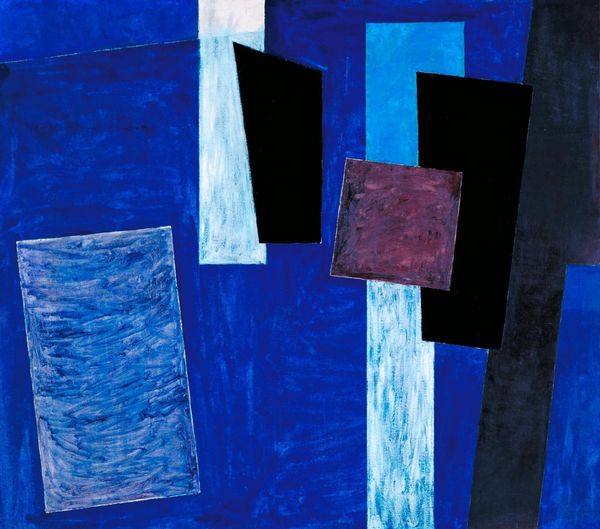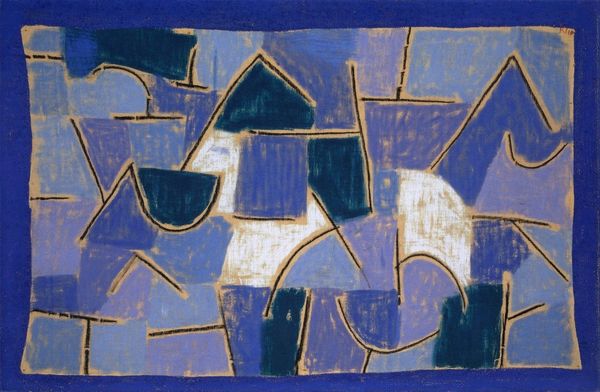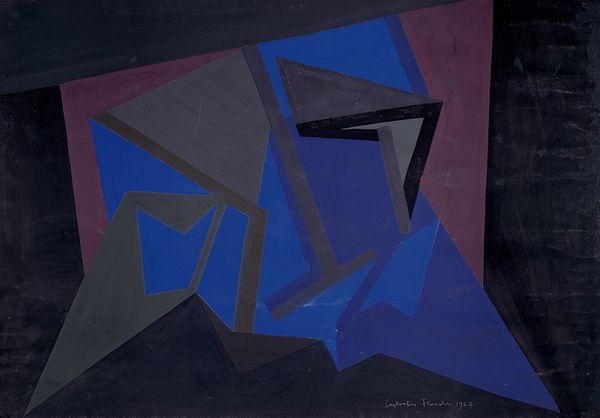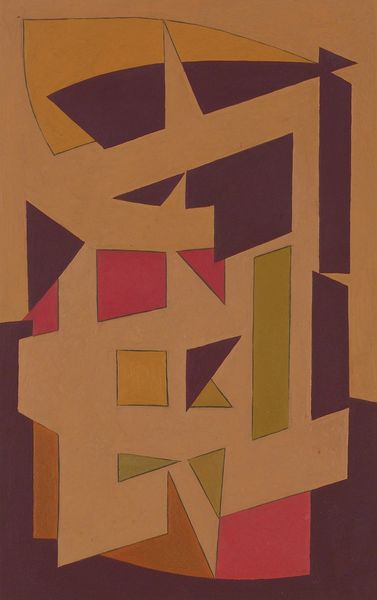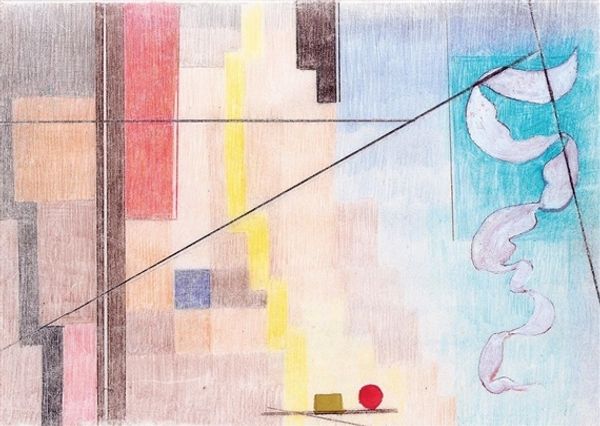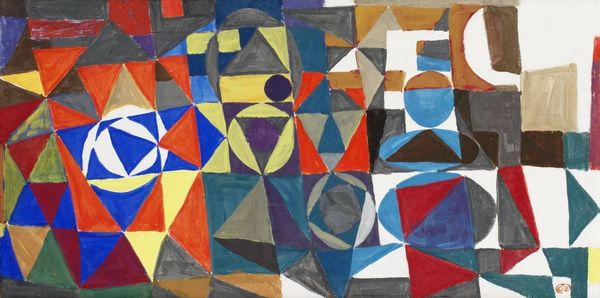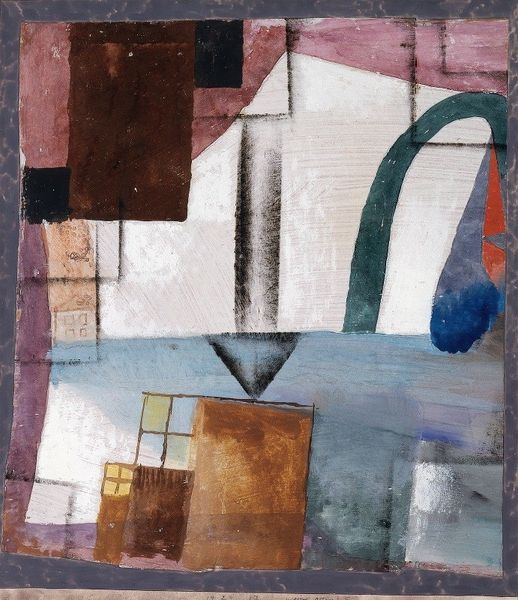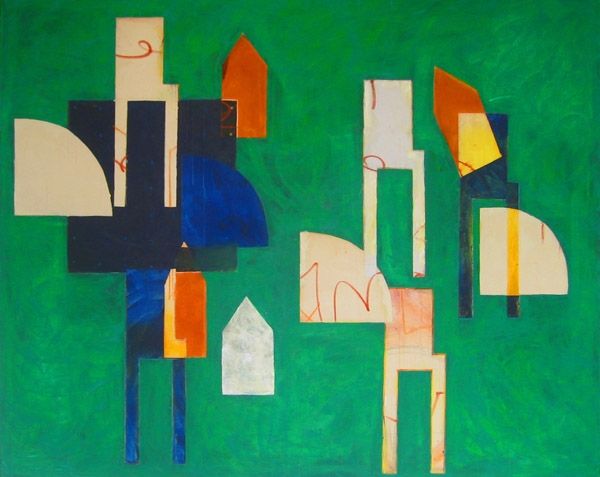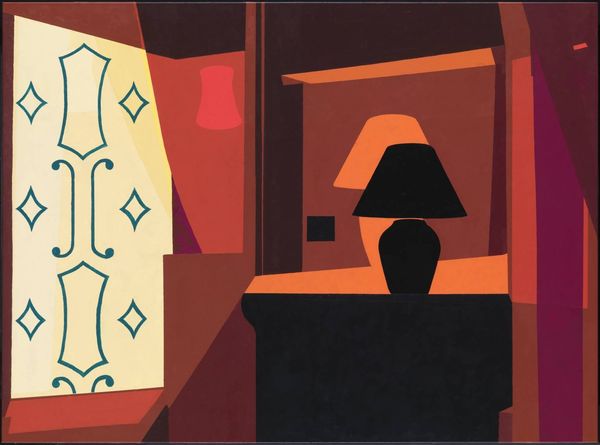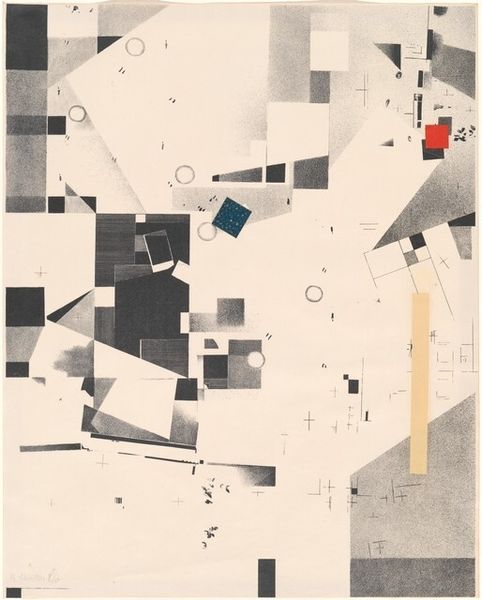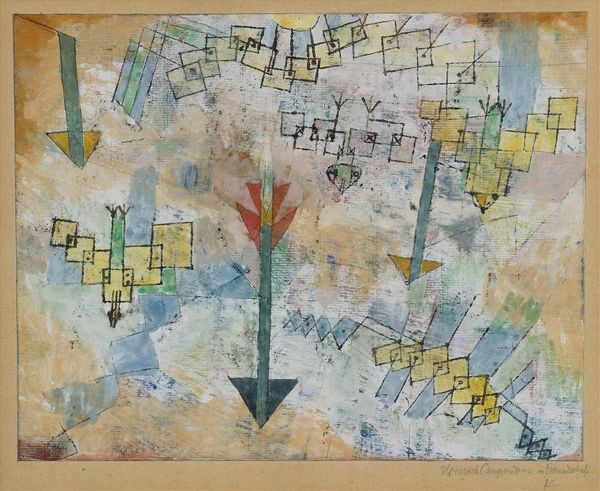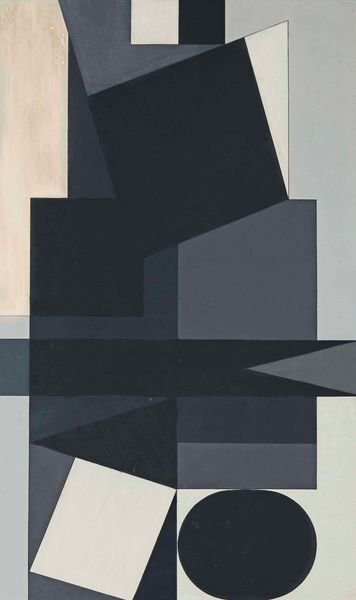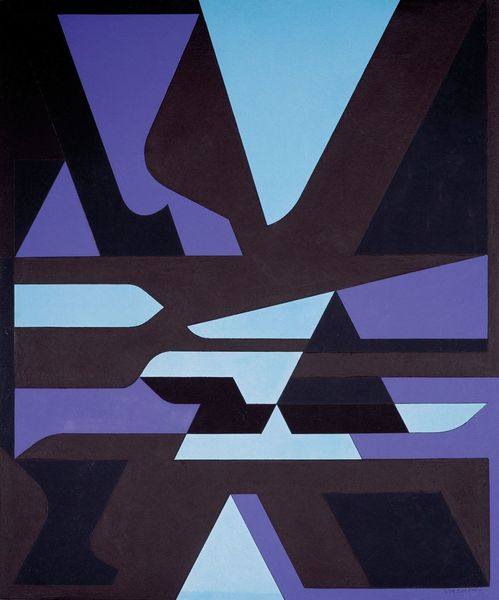
Copyright: Denise Green,Fair Use
Editor: Here we have Denise Green’s "Blu Lascaux," a 1999 painting using acrylic on canvas. It feels like looking at ancient cave paintings filtered through a very modern, geometric lens. What jumps out at you? Curator: It’s intriguing, isn't it? I think Denise is wrestling with a really interesting duality here. You've got this sense of deep time evoked by the "Lascaux" reference – those Paleolithic cave paintings, raw and primal – contrasted with the stark, deliberate geometry, the coolness of modern abstraction. It is almost like Green is using that electric blue to channel the mystery of those caves. But there is something more personal. I wonder if it is her memories, because isn’t she trying to tell us of memory traces, almost indecipherable? Editor: Memory traces? How do you mean? Curator: The geometric forms, although appearing self-contained, seem incomplete. The way shapes intersect, are bisected. Don’t you think? Look at the ladder figure and what seem like a shattered vase; this incompleteness asks us to meditate on our subjective understanding. I bet she’s urging us to consider how individual perception changes memories through fragmentation or selection. And do you notice that while these fragments resist clear definition, they appear balanced? Editor: I do see what you mean. There's something satisfying about the composition, even with its ambiguity. Curator: Precisely! I get a sense of looking backward and forwards, both reflecting and inventing at the same time. Editor: So, the painting isn’t so much about a literal translation of memory or Lascaux caves, but more of Green's engagement with that act of remembering? Curator: I think so. Maybe the painting's abstraction becomes its strength, mirroring how our minds piece together the past. I now get the 'blu'!
Comments
No comments
Be the first to comment and join the conversation on the ultimate creative platform.
